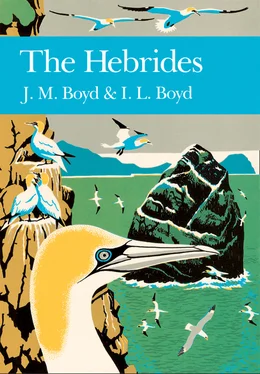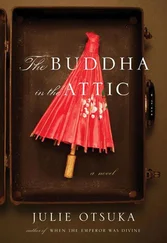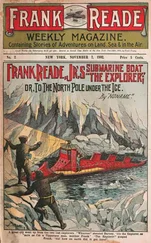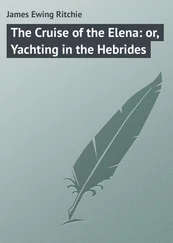
Fig. 1 Map of the Hebrides
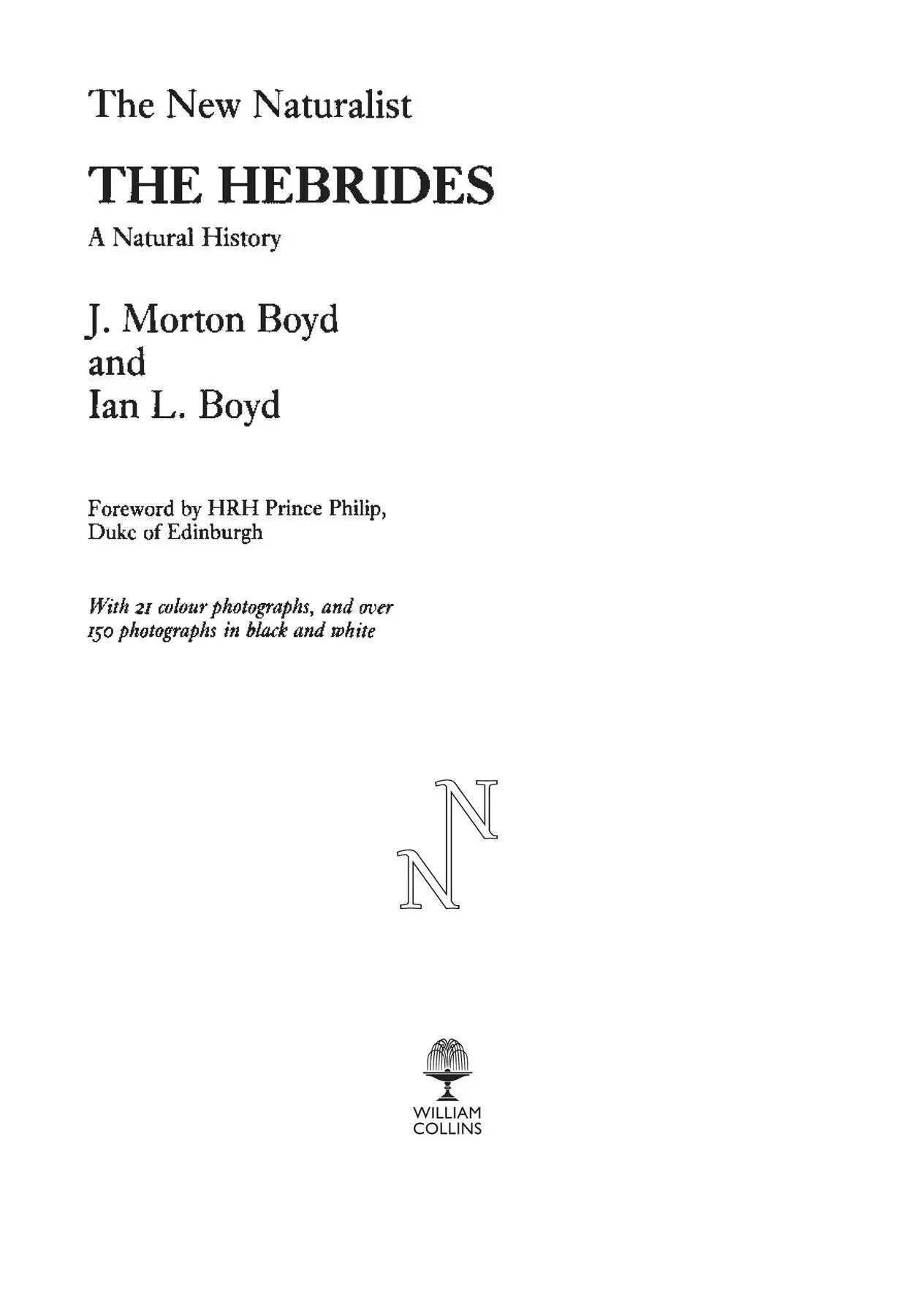
William Collins
An imprint of HarperCollins Publishers 1 London Bridge Street London SE1 9GF
WilliamCollinsBooks.com
This eBook edition published by William Collins in 2019
First published 1990
Copyright © J. M. and I. L. Boyd, 1990
J. M. and I. L. Boyd assert their moral right to be identified as the authors of this work.
© Textured background for limpback cover
‘Marlmarque’, G. F. Smith & Son
HarperCollinsPublishers has made every reasonable effort to ensure that any picture content and written content in this ebook has been included or removed in accordance with the contractual and technological constraints in operation at the time of publication .
Source ISBN 9780007308514
Ebook Edition © FEBRUARY 2019 ISBN: 9780007406630
Version: 2019–02–26
This ebook contains the following accessibility features which, if supported by your device, can be accessed via your ereader/accessibility settings:
Change of font size and line height
Change of background and font colours
Change of font
Change justification
Text to speech
[Page numbers taken from the following print edition: ISBN 9780007308514]
Editors
Sarah A. Corbet
Max Walters, ScD, VMH
Professor Richard West, ScD, FRS
David Streeter, FIBiol
Photographic Editor
Eric Hosking, OBE, Hon FRPS, FBIPP
TO WINIFRED
wife, mother and grandmother
Cover
Map
Title Page
Copyright
Note to Readers
Dedication
Foreword by HRH Prince Philip The Duke of Edinburgh
Editor’s Preface
Preface by J. Morton Boyd
Prologue
Islands in Natural History
Island Races
Grand Relationships
Islands for Science
Part I: The Ecosystem of the Hebrides
1.Geology
Geological Framework
Pre-cambrian and Palaeozoic Rocks
Mesozoic Rocks
Tertiary Rocks
Quaternary Features
2.Climate and Hydrography
Climate
The Weather System
Ecological Effects
Humidity and Temperature
Soil Climate
Rainfall and Sunshine
Wind
Climate in the Past
Hydrography
3.Soils
Glacial Till with Brown Forest Soils
Morainic Drift with Peat and Gleys
Outwash Fans and Raised Beaches
Colluvium and Shallow Drifts with Podzols
Aeolian Sand with Regosols
Montane Detritus
4.Life in the Sea
Fish
Benthos
Plankton
Marine Mammals
Turtles
5.The Sea Shore
The Vivid Frontier
Upper Shore
Middle Shore
Lower Shore
Shore Birds and Otters
6.Sand Dunes and Machair
Windblown Sands
Upper Beach and Foredunes
Dunes
Dry Machair
Wet Machair
7.Crofts and Farms
Inbye and Blackland
Patterns of Landuse
Agricultural Habitats
Corncrakes and Corn Buntings
Corncrake
Corn Bunting and Others
8.Woodlands
Tree-growth in the Islands
Native Woodland
Plantations
Woodland Fauna
9.Moor and Hill
Moorland Habitats
Lowland Heath
Bogs and Mires
Blanket and Raised Mires
Valley Bogs
Montane Communities
10.Inland Waters
Physical and Chemical Conditions
Freshwater Vegetation
Brackish Waters
Moorland Waters
Machair Waters
Rivers and Streams
Fish
Reptiles and Amphibians
Waterfowl
Mammals
Part II: Studies of Islands and Species
11.The Seabird Islands
The Islands
St Kilda
The Shiants
North Rona and Sula Sgeir
Mingulay and Berneray
Small Isles
Treshnish Isles and others
Handa
The Species
Fulmar
Manx Shearwater
Small Petrels
Gannet
Cormorant and Shag
Skuas
Gulls
Terns
Auks
12.The Seal Islands
Seals and the Hebrideans
Size and Distribution of the Grey Seal Population
The Breeding Cycle of the Grey Seal
Conservation and management of the Grey Seal
Common Seal
13.The Wildfowl Islands
Islay
Barnacle Goose
Greenland White-fronted Goose
Greylag Goose
Tiree, Gunna and Coll
Uists and Benbecula
Swans
Ducks
14.The Machair Islands
Tiree and the Uists
The Monach Isles
Machair—a Natural Heritage
15.Rum—an Island Nature Reserve
The Volcano
The Forest
Red Deer
Sea Eagles
16.St Kilda—Island of World Heritage
The St Kildans
Rock of Ages
Home of the West Wind
Seabirds of St Kilda
Wrens and Mice
Feral sheep—Soays and Blackfaces
Part III: Islands and People
17.Naturalists and Historians
16th and 17th Centuries
18th and 19th Centuries
First Half of the 20th Century
Second Half of the 20th Century
18.Land Use—Tryst of Man and Nature
Land Use History
Agricultural Improvement
Forestry
Minerals
Ores
Silica
Aggregates, Slates and Block Stone
19.Fisheries and Fish Farming
Fishery History
Demersal and Pelagic Fish
Shellfish
Fish Farming
20.Nature Conservation
Biological Sites
Coastal
Uplands
Woodland
Inland Waters
Peatland and Bogs
Geological Sites
Lewisian, Torridonian, Moine
Mesozoic
Tertiary
Marine Conservation
Nature Reserves
Protected Species
Picture Section
Epilogue
Bibliography
Index
Acknowledgements
About the Publisher
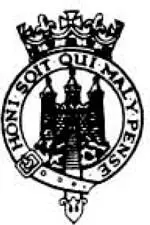 |
WINDSOR CASTLE |
It might be said that enthusiasm is the mother of creation. There is no doubt at all about the enthusiasm of the Boyd family for the Hebrides, and it shows in every line of this splendid book that they have created. Having sailed and cruised in Hebridean waters for many years and having acquired an interest in birds, I can quite understand the fascination of that very beautiful part of the world for those with a consuming passion for natural history.
Читать дальше
